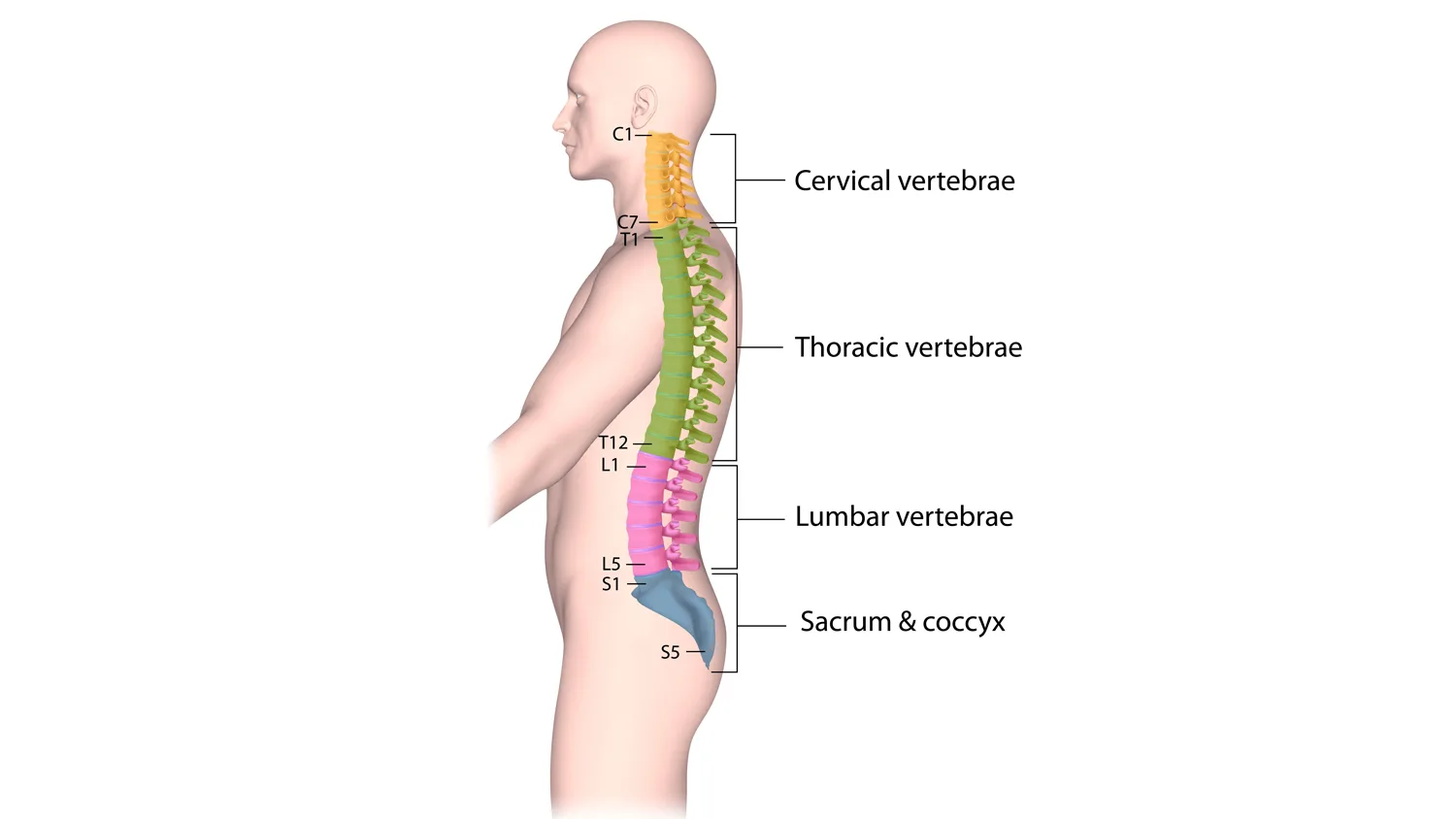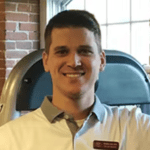Relieve Back Pain & Bulletproof Your Spine

Dr. Matthew Styf, PT, DPT is a certified clinical orthopedic specialist and S&C coach based out of Massachusetts. He brings a unique viewpoint to the strength training community as both a coach and physical therapist with extensive experience helping athletes/patients return to their desired activities. In this blog, he explains the importance of spinal/hip mobily and stability and offers solutions for improving both.

Change the Way You Train
Understanding Spinal Movements
Flexion (forward bending) and extension (bending back) are the main movements of the lumbar (low back) spine. The thoracic (mid back) is able to rotate in addition flexion, and extension.

For example, the thoracic spine needs to be mobile, the lumbar spine needs to be stable, and the hip joint needs to be mobile.
If your spine/hip joints aren’t able to function properly, that’s probably why you’re experiencing back pain.
Find Lumbar Stability
Bracing requires proper breathing and muscular contractions of the glutes to stabilize the pelvis. This is learned initially by lying down on your back, and then progressed into standing.
When lifting, you should use the standing position to decrease the risk of stabilizing your spine through passive structures, such as bones and ligaments. If you use passive structures, you risk developing back pain, especially under load during lifts such as the squat or deadlift.
How to Brace in Supine (Lying on Your Back)
Lie flat on your back and point your toes. Squeeze your glutes and take a long, deep inhale and long exhale.
At the end of the exhale, your abdominals should contract. This is your neutral spine position, which you should use when you lift.
How Brace While Standing
Stand with your feet shoulder-width apart with even pressure even across your feet. Push your feet into the ground and squeeze your glutes. Take that long, deep inhale and long exhale until you feel your abdominals contract.
Hold this abdominal contraction and take shallow breaths behind your braced abs.
Improve Thoracic & Hip Mobility
Now that you know how to improve your lumbar spine stability, it’s time to focus on mobility at both the thoracic spine and hip joints.
Thoracic mobility is important to maintain positioning with deadlifts, squats, and overhead lifts (overhead squat). It’s also important for the rotational athlete (think golf and baseball) to reduce the chance of rotating through their lower back and increase the risk of fracture.
My favorite movements to improve thoracic spine mobility include: child’s pose with rotation, adductor rock with rotation, and bench t-spine mobilization.
As far as your hips go, mobility in combination with strength is key. But focusing on mobility exercises is especially important so that your hips can move and take the strain off your lower back.
My favorite hip stretch is the 90-90 hip stretch, and my favorite mobility/strength combo exercise is the shin box. You can even combine the two once you get the hang of both on their own.
When working on hip mobility, take into account the hip capsule (ligaments around the hip). You can address these through self-mobilization. I recommend using banded assistance movements such as these anterior mobilization, inferior mobilization, and lateral mobilization movements.
Build Strength With Resistance Movements
So now that you understand how to address mobility/stability of your spine and hips, let’s look at some strengthening ideas to put that nagging back pain to rest.
Your trunk (chest, abdomen, pelvis, back) needs to be rigid so that it can transfer force from the upper quarter to the lower quarter of your body and vice versa. Because of this, the primary focus of the exercises that support the lumbar spine are resisting movements.
Anti-extension movements (such as the plank) are great basic resistance movements. Anti-rotation movements such as the pallof press are awesome and are used in many of my programs. Other great exercises are the side-plank or back extensions on the GHD.
But remember to find your lumbar neutral (by bracing) before performing these movements.
Bulletproofing your spine won’t happen overnight, but if you consistently work on the areas mentioned above, you’ll see a decrease in the frequency, amount, or intensity of back pain that you’re experiencing.
And remember! If you try these and your pain is not improving or even getting worse, seek proper medical advice to help with your individual bout of back pain.
Find Your Perfect Training Plan
Sometimes all you need to reach your destination on your fitness journey is an expert guide. We've got you covered. Browse from thousands of programs for any goal and every type of athlete.
Try any programming subscription free for 7 days!
Related articles
3 Ways to Improve Mobility Without Stretching
Are you still trying the endless foam rolling and stretching exercises to get that deep squat position? We know how important mobility is for great, or even GOOD performance. All professional athletes have some comfortability in end ranges of motion. So, what else do...
The Ultimate Guide to Lunges: Queen of all Glute Exercises
Your glutes are the largest muscle group in your body. They’re responsible for almost everything your legs do—walking, running, jumping, squatting, lunging, and just standing upright. As far as moving through space goes, strong glutes are the bedrock of overall...
A Beginner’s Guide to Steel Mace Training
Author: Jesse Grund
Mace training will make you a better mover without it’s not confining you to a fixed space or predetermined range of motion. Second, it’s an offset load with 80 to 90 percent of the weight in the head. You’re also constantly having to resist rotation, which creates greater core engagement.

Join the community
Sign up for the latest training news and updates from TrainHeroic
For Coaches
Support
Made with love, sweat, protein isolate and hard work in Denver, CO
© 2023 TrainHeroic, Inc. All rights reserved.







